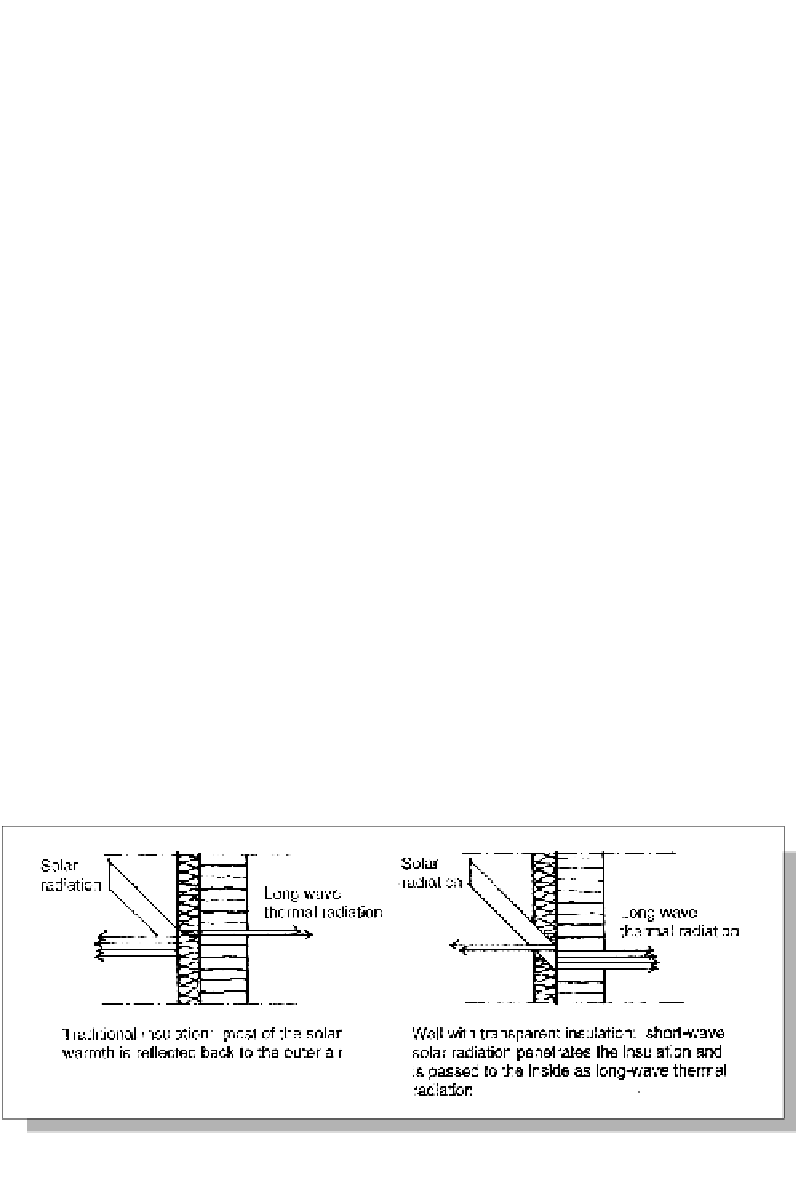Civil Engineering Reference
In-Depth Information
thin strips. These release water, curl up like snakes and swell to become a light
porous mass which can be used as an independent loose insulation or as an
aggregate in a lightweight concrete in the proportions 6:1 vermiculite to cement.
Other mineral binders can be used. Prefabricated slabs are made in varying
thicknesses, from 15 mm to 100 mm.
As with the other mineral materials, vermiculite is particularly useful for high
temperature equipment. It easily absorbs large amounts of moisture, even more
than untreated perlite. As normal wall insulation it has a tendency to settle a
great deal. This can be solved by applying compression up to 50 per cent, using
a coarser form of the material. The environmental situation is approximately the
same as for perlite.
Foamed quartz
By adding hydrochloric acid to a solution of waterglass (calcium silicate), silicic
acid is formed in a jelly type mass. Its trade name is 'aerogel'. This is used as
transparent thermal insulation, usually between two sheets of glass. It is best
used in connection with solar heating. The sun's radiant energy penetrates the
gel, while it prevents the loss of heat through convection and loss of long-wave
radiation (see Figure 14.7).
A transparent layer of insulation on the south wall of a brick building, can pro-
vide much of the heat it requires because the warmth goes through the wall and
into the building. Heavy brickwork will even out the temperature and prevent
overheating or too much cooling.
This type of gel is at present not in general use, and has disadvantages: it does
not tolerate water and has a tendency to crumble. But it has few negative conse-
quences in relation to the environment and resource extraction.
Figure 14.7: Transparent thermal insulation.

